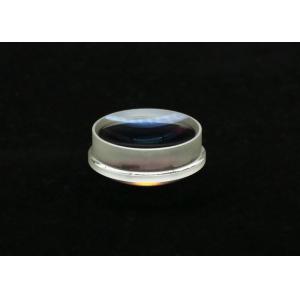BK7 ZF2 Or ZF5 Custom Optical Components Positive Achromatic Lenses
Add to Cart
Acromatic Lens
Achromatic Lens is an achromatic consists of a positive low-index
Crown Glass lens element cemented to a negative high-index Flint
Glass lens element. The elements are chosen so as to cancel
chromatic aberration at two well-separated wavelengths, usually in
the blue and red region of the spectrum. Focal length is constant
at those two wavelengths and focal length shifts are virtually
eliminated across the visible wavelengths. One frequent use is to
achieve diffraction limited focusing of a laser beam.
Negative Achromats are typically used when there is a need to
eliminate chromatic aberration. In addition to reducing chromatic
aberration at the design wavelengths, spherical aberration and coma
are greatly reduced.
Optical AR Coatings
a) Uncoated,The surface reflectivity of uncoated visible lenses(Refractive index=1.5) is about 4%.
Click on the link to see how to calculate reflectivity
b) AR/AR@400-700nm,Tavg>99.4%
c) AR/AR@450-650nm,Tavg>99.6%
d) AR/AR@400-1000nm,Tavg>98.5%
e) We can also customize high damage threshold antireflective coatings
Optical Properties of acromatic lens
| Material | Optical glass |
| AR Coating Range | 400-700nm or customized |
| Reflectance over AR Coating Range @ 0° AOI | Ravg<0.5% |
| Diameter Tolerance | +0.0/-0.1 mm |
| Thickness Tolerance | ±0.1 mm |
| Focal Length Tolerance | ±2% |
| Surface Quality | 40/20 Scratch-Dig |
| Surface Flatness (Plano Side) | λ/2 at 633nm |
| Spherical Surface Powerc (Convex Side) | 1.5λ at 633nm |
| Surface Irregularity (Peak to Valley) | λ/2 at 633nm |
| Centration | <3 arcmin |
| Clear Aperture | >Ø10.16 mm (Ø1/2" Lenses) >Ø20.32 mm (Ø1" Lenses) |
| Design Wavelength | 546nm |
Lens Grinding
Lens High Speed Polishing
Optical Coating




